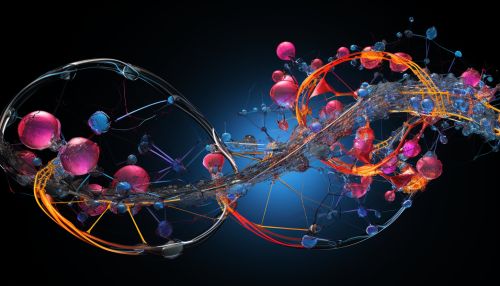Molecular Biology
Introduction
Molecular biology is a branch of biology that concerns the molecular basis of biological activity within and between cells, including molecular synthesis, modification, mechanisms, and interactions. The central dogma of molecular biology describes the process by which the genetic information in DNA is transcribed into RNA, then translated into proteins. This field overlaps with other areas of biology and chemistry, particularly genetics and biochemistry[1].


History
The term "molecular biology" was first used by Warren Weaver in 1938. Weaver was the director of Natural Sciences for the Rockefeller Foundation at the time and believed that biology could progress much as physics had, by studying the smallest fundamental particles of life[2].


Central Dogma
The central dogma of molecular biology is an explanation of the flow of genetic information within a biological system. It is a framework for understanding the transfer of sequence information between sequential information-carrying biopolymers, in the most common or general case, in living organisms. There are 3 major classes of such biopolymers: DNA and RNA (both nucleic acids), and protein. There are 3×3 = 9 conceivable direct transfers of information that can occur between these. The dogma classes these into 3 groups of 3: three general transfers (believed to occur normally in most cells), three special transfers (known to occur, but only under specific conditions in case of some viruses or in a laboratory), and three unknown transfers (believed never to occur). The general transfers describe the normal flow of biological information: DNA can be copied to DNA (DNA replication), DNA information can be copied into mRNA (transcription), and proteins can be synthesized using the information in mRNA as a template (translation)[3].


Techniques
Molecular biology techniques are common methods used in molecular biology, biochemistry, genetics and biophysics which generally involve manipulation and analysis of DNA, RNA, protein, and lipid.


Applications
Molecular biology has wide-ranging applications in gene finding, molecular mechanisms of diseases and its therapeutic approaches by cloning, expression and regulation of gene. Research area includes gene therapy, drug discovery, molecular medicine, evolutionary biology, agricultural biotechnology, and many more.


See Also
References
- ↑ Alberts B, Johnson A, Lewis J, et al. Molecular Biology of the Cell. 4th edition. New York: Garland Science; 2002. Available from: https://www.ncbi.nlm.nih.gov/books/NBK21523/
- ↑ Weaver, Warren (1938). "Molecular Biology: Origin of the Term". Science. 170 (3960): 581–582. doi:10.1126/science.170.3960.581. PMID 17778513.
- ↑ Crick, F (1970). "Central Dogma of Molecular Biology". Nature. 227 (5258): 561–563. doi:10.1038/227561a0. PMID 4913914.
